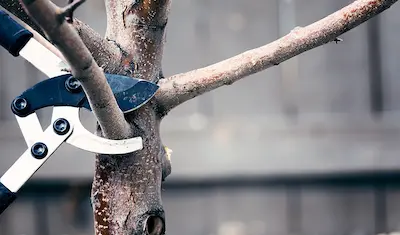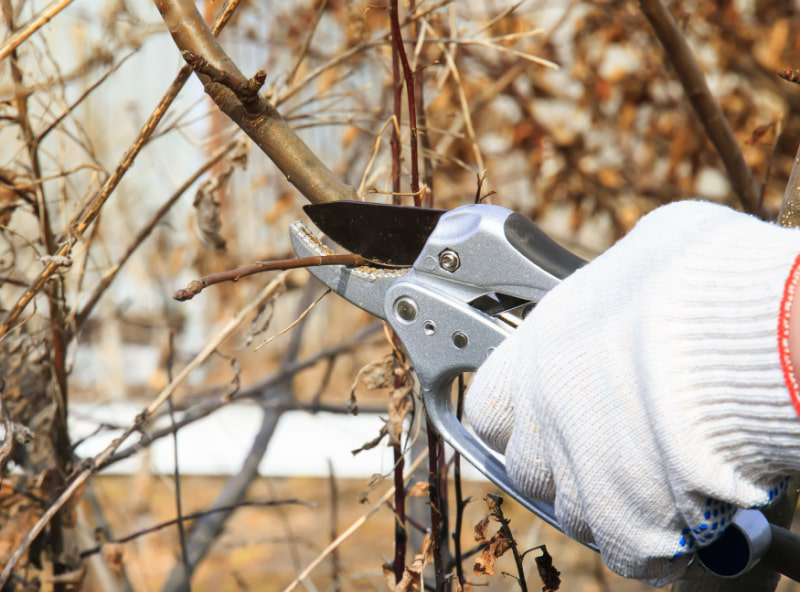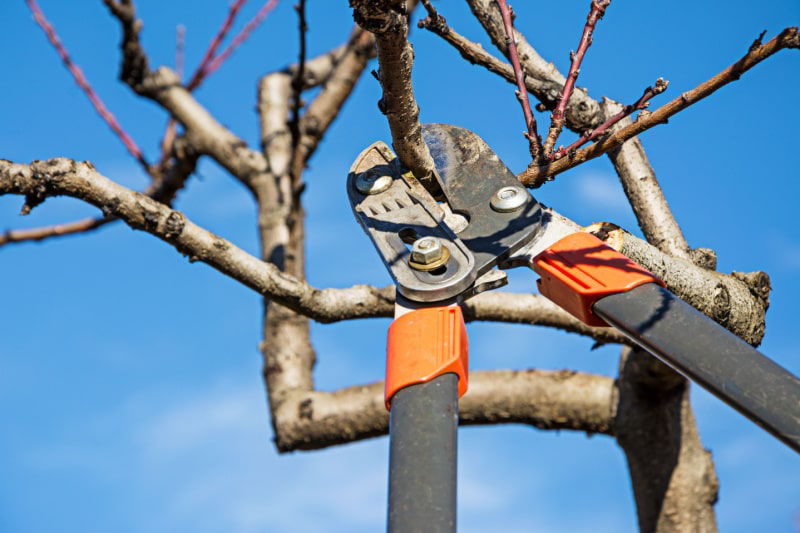Should You Prune Trees in the Winter Season?

Regular pruning throughout the year is a part of good tree care. Pruning can help your trees stay strong and healthy while you remove dead or broken branches that could damage your home and property. However, people often have questions about when to prune trees and how to do it correctly. Especially here in Canada, where cold weather may interfere with outdoor projects, everyone wants to know: Should you prune trees in the winter season?
While each type of tree has unique requirements for optimal health and growth, most will benefit from tree care during the winter months, including pruning. Read on to learn everything you need to know about how to prune trees in the winter.
Table of Contents:
- When to Prune Trees
- What Is Dormant Pruning?
- What Are the Benefits of Dormant Pruning Trees in Winter?
- Which Trees Do Best with Dormant Pruning?
- How to Prune Trees in the Winter
When to Prune Trees
In most situations, winter is the optimal time for pruning, as the tree has entered a state of dormancy and most of the leaves have fallen. Once the branches and limbs are exposed, it is much easier to observe the tree’s structure and identify areas of concern that may otherwise remain unseen.
What Is Dormant Pruning?
Simply put, dormant pruning means cutting back trees and other plants during a period when they are not actively growing. As mentioned above, most trees enter a dormant period in late fall and winter, which makes this the optimal time to prune trees.
What Are the Benefits of Dormant Pruning Trees in Winter?

Pruning is essential to support the health and longevity of your trees. It should always be part of your tree care routine. There are many important pruning benefits. Regular pruning promotes healthy growth, encourages fruit production, gets rid of sick or damaged branches, and improves the visual appeal of your trees. It can also eliminate potential hazards to your home and property.
Dormant pruning offers even more benefits. Here are just a few:
Faster Healing:
Though pruning is necessary, it injures your trees, requiring time to heal. When your trees go dormant in winter, they are already at rest. They aren’t using their energy to grow new leaves, fruits, or nuts. Dormant pruning allows them to focus on healing, which they typically do more quickly in the colder months.
Better Visibility:
It can be difficult to prune trees properly when they’re in full bloom. Leaves can hide broken, damaged, or diseased branches. You don’t want to miss those and regret it later. Pruning in the winter when trees have lost their leaves gives you better visibility to determine what needs to go.
Better Disease Protection:
Pruning trees results in cuts that can be vulnerable to fungi, bacteria, and insects. This increases a tree’s risk of disease or infestation. Many of these risks are lower or altogether nonexistent in the winter months. After all, you won’t find many critters crawling about during a Canadian winter.
Better Spring Growth:
There’s nothing like seeing those first green leaves unfurl from branches after a long Canadian winter. Dormant pruning can help your spring trees burst to life with strong and healthy new growth. It gets rid of sickly and excess branches, allowing your trees to focus their energy and resources on the remaining healthy branches. The resulting spring bloom can increase the beauty of the trees on your property.
Which Trees Do Best with Dormant Pruning?

Not every tree responds well to dormant pruning, so always do your homework before you bring out your loppers and shears. Fruit trees and other varieties, including bald cypress, honey locust, juniper, poplar, and spruce trees, all respond well to winter pruning. On the other hand, sap-producing trees such as birch, elm, maple, and walnut are better left until late summer or early fall due to seepage.
How to Prune Trees in the Winter
To prune trees properly here’s what you will need:
- Gloves
- Hand pruner
- Handsaw
- Loppers
- Protective/warm clothing and eyewear
- Shears
- A ladder or step stool (to reach higher branches) and someone to secure the ladder
Which tools you use will depend on the diameter of the branches you wish to remove. Before you begin, examine the tree to determine a suitable course of action, noting any dead or dying limbs. It’s also best if you have a pruning buddy to assist you. They can help support a ladder (if needed) and remove the branches you prune from the surrounding area. This will not only make the job go faster, but it will also provide a measure of safety during the process.
Begin pruning by removing smaller branches first in order to thin, shape, or reduce their numbers:
- Take your hand pruners and make a clean, diagonal cut ½ cm above where a bud faces outwards from the plant.
- Make cuts at a 45-degree angle to discourage disease or water damage.
- Keep in mind pruning will encourage new growth in the direction of the cut.
To Remove Large Branches or Limbs:
- Larger branches should be cut in stages to prevent injury to yourself or the tree.
- Make a series of three separate cuts using your handsaw, beginning with a cut halfway through the underside of the limb, approximately 45 cm from the tree trunk.
- Once complete, move to the top of the branch and begin cutting approximately 3 cm further out from the cut on the underside, sawing through to remove the limb.
- Make your final cut at a 45-degree angle just outside of the branch's collar, close to the trunk of the tree.
As with any do-it-yourself project, know your limits, and be sure to reach out for professional assistance when needed.
Learn more about: Can You Plant Grass Seed in Winter in Canada?
Need Help with Dormant Pruning?
While dormant pruning is beneficial, it can also be a challenge, especially if you have a lot of trees on your property. If you don’t want to face off against the Canadian winter to prune trees, Find The Grounds Guys® location nearest you and contact us. We offer expert dormant pruning and complete tree care. Our professionals are responsive, knowledgeable, and friendly. They’ll be happy to assess your property and recommend the best pruning schedule for your trees.
We can also handle all your cold-weather landscaping needs, including snow and ice management. We provide free estimates, and the Neighbourly Done Right Promise™ backs all our work, so your satisfaction is guaranteed.
 Click to call
Click to call


